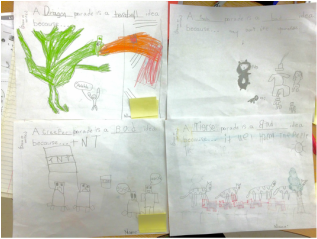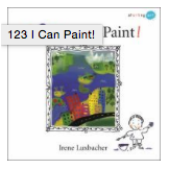Creating Art - Exploration & Problem Solving - Perfect for Developing a Growth Mindset in Students
One little girl (G1), immediately settled at the table, grabbed her paint brush and started filling up her eggs with colours. Being the Arty soul that I am, I joined her at the table. I started filling my eggs with patterns. Two other girls came over (G2 and G3) and they wanted in on this Egg-painting Extravaganza. I gladly gave up my paint brush and used a pencil to fill in the rest of my eggs.
Now, working with water paints sounds simple, but it provides ample opportunity to problem solve: too much water results in a wishy washy colour; if you don’t rinse the brush well enough, the colours blend in the tray; you are limited by the colours in the tray,… or are you?!
G1 filled about six pages of eggs with solid colours before she was brave enough to try some patterns and colour-blending. But she kept counting the eggs she had left to colour, thus working on her numeracy skills, naturally, without being instructed to do so. This nicely illustrates how young children use their daily “play” activities as natural learning opportunities, and how a knowledgeable educator can use natural conversations to encourage the process. This girl probably filled about 70 eggs, increasing her exploration and discovery as she proceeded.
G2 was quite meticulous in her methods. She only used one page of seven eggs, but she immediately realized that she could mix her own colours by layering them directly on her paper. She discovered this by simply observing what happened when she placed the different colours beside each other. (The colours blend where they meet, making a new colour.) I said, “I love making new colours! It’s super neat because you can make your very own colour and then it’s fun to give it a name.” She agreed. I gave her validity of her process and provided an opportunity for higher order thinking. She also stated she was going to make a lighter colour. I asked her, “How are you going to do this?” She proceeded to choose a lighter colour to mix with a darker one. These special moments of wonder and awe come so often in young learners as they engage in art (and play). It happens naturally. An educator’s skill lies in providing the materials for the students. The educator does this with intent. Of course, the young learners explore things that were not even thought of by the educator! - This is true, you know it is! And, of course, recognizing these ample moments for rich conversation to push their thinking further.
Now, back to our learning situation… I used paper towel to wipe excess water off my brush and G2 noticed this method that I had subtly modelled. She began to do the same. She independently took this line of thinking further; she decided that she could mix colours on the paper towel before applying the process to her paper. The final discovery she made was that she could paint her finger and press it to her paper, making mini-eggs, with a finger-print pattern. I told her that was a great idea and I immediately did the same to colour the rest of my eggs. (Recall, I gave up the third paintbrush to G3 because I am a sacrificing teacher… ha ha!)
Throughout the whole situation, G3, very quietly, observed me, and she went about using the pencil to try her own patterns to fill her eggs. She also tried what G2 did with her careful blending and finger-painting techniques. I provided gentle encouragement and reassurance, and she became increasing braver in proudly showing her work.
| With art, all this comes together and nurtures the development of a growth mindset - paint right over mistakes, or get another paper and try again (all without judgment from teacher - “It’s okay; that’s what’s one of the things that is awesome about art!”) As Bob Ross (The Joy of Painting) says, “We don't make mistakes, just happy little accidents.”He tells us: “I started painting as a hobby when I was little. I didn't know I had any talent. I believe talent is just a pursued interest. Anybody can do what I do.” … Which leads me to… |
Here’s another nugget of fine advice from Bob Ross,
“The secret to doing anything is believing that you can do it. Anything that you believe you can do strong enough, you can do. Anything. As long as you believe.”
Young children really do believe that they can do anything - watch them play and listen to them tell a story! They have this bold and fiery attitude until they are told differently; life will tell them differently; as a teacher, I aim to nurture and develop it.
Even the boys, whom had gravitated to the intentionally-chosen computer game, were learning turn-taking, which is very hard to do - nobody enjoys waiting, but 5 year olds really hate it! But these are some topics for another day and another post:)















 RSS Feed
RSS Feed
